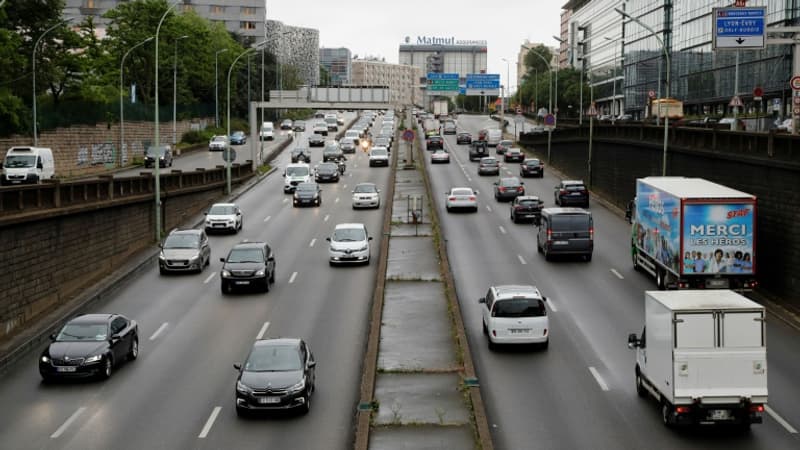Reduce accidents and noise or, of course, decrease pollution: these were the objectives that show the Paris City Council to justify the speed limitation on the device from 70 to 50 km/h. A measure that has been applied since September 2024, but whose evaluation would not be as flattering as what the municipal team wants to believe.
This is what a press release from the Drivers League, which had presented an appeal against this fall in speed, says, as well as the French Bikers Federation Angry (FFMC), with also a collective action of the lawyers of the “legal response” platform. The latter decided to return to the results of this measure, with quite distant conclusions of the “Ring Road Bulletin”. A service presented by the City of Paris as “a new transparency and awareness tool” with weekly balances in six indicators.
“In truth, the measurement of the speed of decrease is ineffective in pollution, accidents and brings an insignificant advance on noise,” summarizes the Association of the Driver Defense League.
A more dangerous peripheral at 50 km/h?
In the first eight months after reducing speed, the Paris City Council evokes, for example, a 14% drop in the number of accidents. However, this figure remains in the trend for a fairly long period and, therefore, the fall of speed would not have had a significant influence at this point.
“At least, since 2007, the number of accidents on peripheral boulevard decreases on average by 16% per year,” said Maître Séverine Manna, cited in the press release of the Driver Defense League.
Be care also, warn the association, to a data that can vary strongly from one week to the next. Without luck for the Official Gazette of the Paris City Council, during the week of May 19 to 23, 2025, the last one currently available, the number of accidents even appeared from 14% compared to the same week in 2024 (16 accidents against 14) and even +69% the previous week (22 accidents against 13).
During these two weeks, and despite the fall in speed, the device, therefore, was in a certain way at risk for motorists than last year.
An effect on pollution that is put in perspective
Unfortunately, we can make the same observation about pollution:
“If we go to read Strict sensu Pollution figures with nitrogen dioxide (NO2) and fine PM10 particles of these last eight months, prayer is as follows: pollution has increased! “Reinjide to the driver Defense League.
Actually, these variations would be explained more due to climatic conditions than due to traffic conditions on the device:
“The months in which a substantial drop in NO2 emissions were observed are those that experienced the most important precipitation (October 2024 and January 2025). On the contrary, NO2 emissions increases were observed during the least rainy months (February, March and April 2025),” explains the legal response cited by the association.
In fine PM10 particles, the concentration also depends on the intensity of the wind, the stronger, the more these particles are dispersed in the atmosphere and vice versa.
Excessive communication in the fall in noise
The Driver Defense League also puts the flattering evaluation of the Paris City Council in the noise.
“On the general day, the decrease is 1.9 decibel, or 2% decrease,” says Maître Séverine Maná, which would be “imperceptible by the human ear.”
The Official Gazette of the Paris City Council insists on the fall in the noise at night, of -2.3 decibels, again insufficient to be really remarkable according to the association and the group of lawyers.
Above all, the explanation is not only due to speed reduction, but to the 9% drop in traffic during the period, with motorists sometimes deviated in other axes from 50 km/h. But also with the opening of the dedicated track, during the peak time, from March 3.
Source: BFM TV


